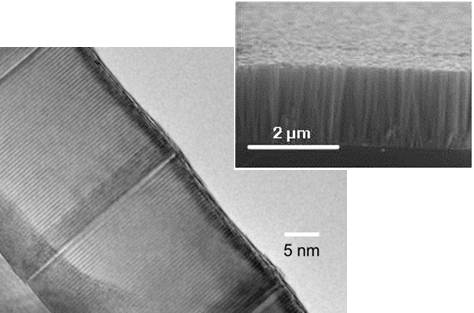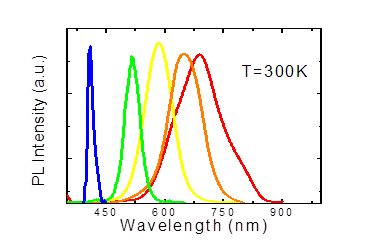Wide bandgap nanostructured materials for quantum light emitters
Mission
This IRG focuses on the development of nitride- and ZnO-based semiconductor quantum structures, establishing inorganic semiconductor nanophotonic structures with large bandgap and high exciton binding energy for high-efficiency light emitters, lasers, energy conversion, and other quantum devices. The research scope includes the epitaxy and synthesis of GaN-and ZnO-based nanostructures, their structural, electrical and optical characterization, and their application in laser spectroscopy and quantum optical studies, investigation of strong coupling phenomena, polariton lasing, high-efficiency visible LEDs, and microcavity lasers.
Research Overview
Modern photonic devices typically are based on the ubiquitous III-V semiconductor quantum structures, which constitute an archetypical example of a nanoscale system that has made an enormous impact in both basic condensed matter physics and applications. Conventional semiconductors, however, suffer from several limitations: their band gaps typically lie in the near-infrared spectral region, the exciton binding energy is small (few meV), and it is difficult to integrate the nanoscale structure to the micron scale with the accuracy required for many applications. (For example, sufficiently accurate positioning of a single QD of precise size and composition within a photonic crystal or microcavity is extraordinarily challenging.) Hence, many quantum phenomena of interest are manifested only at very low temperatures, and the excitonic state is not stable at high density.
 Recent breakthrough results by C-PHOM researchers have the prospect of enabling fundamental advances over such conventional approaches. For example, Bhattacharya’s group has recently demonstrated the growth of wide bandgap nitride quantum structures that operate with unprecedented efficiency in the visible spectrum. This work opens up a new frontier in wide bandgap semiconductor nanostructures for high-efficiency light emission, energy conversion, lasers, and applications to quantum information science.
Recent breakthrough results by C-PHOM researchers have the prospect of enabling fundamental advances over such conventional approaches. For example, Bhattacharya’s group has recently demonstrated the growth of wide bandgap nitride quantum structures that operate with unprecedented efficiency in the visible spectrum. This work opens up a new frontier in wide bandgap semiconductor nanostructures for high-efficiency light emission, energy conversion, lasers, and applications to quantum information science.
The overall objectives of this IRG are to investigate the epitaxial growth of GaN- and ZnO-based nanowires and quantum confined heterostructures and exploit these unique materials to study light-matter coupling processes and investigate the intrinsic properties of efficient wide-gap quantum emitters. We characterize defects, strain, polarization fields and optical properties of the nanostructures. Laser spectroscopy and quantum optical studies include the characterization of single photon properties, relaxation and decoherence rates, dynamics of hot carriers, and quantum and spin coherence phenomena. Strong coupling phenomena and polariton emission properties are investigated at high temperatures. It is important to add that while there is ongoing work on the growth of nanowires and quantum structures, their intrinsic properties are yet to be elucidated; similarly very little work has been reported on the use of wide-bandgap GaN and ZnO-based heterostructures for the studies listed above. The characteristics of light-emitting diodes and lasers made with quantum dot and nanowire gain regions are being investigated. For example, the role of Auger recombination, defects and carrier leakage in the performance of light-emitting diodes, which lead to efficiency roll-off, or “droop” is being examined theoretically and experimentally. This is a serious shortcoming in nitride-based LEDs, which impacts the progress of solid-state lighting.

